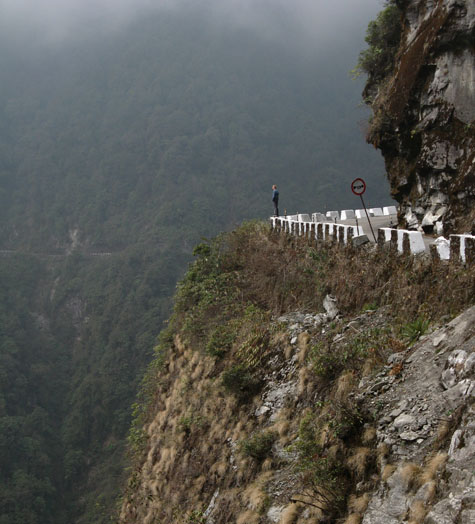| Tectonic Geomorphology of the Bhutan Himalaya |
 |
Project Summary
Personnel: Byron Adams Kip Hodges (Ph.D.) Arjun Heimsath (Ph.D.) The physiography of the Bhutan Himalaya is remarkably different from the better studied Nepal Himalaya. In central Nepal, the Himalaya is characterized by a mountainous but relatively low-relief Lesser Himalaya “foothills” some 80km wide that is bound on the south by the MFT and MBT thrusts. To the north, there is an abrupt “physiographic transition” to the very rugged and high-relief High Himalaya. The transition occurs near the tectono-stratigraphic position of the MCT. From this topographic break, elevations climb rapidly to the high peaks and crest of the range. By contrast, in Bhutan, there is no physiographic Lesser Himalaya – rugged, high-relief topography starts in the immediate hanging wall of the MFT/MBT thrusts. But the climb to high elevations is interrupted first by a laterally (E-W) discontinuous “bench” of a low relief landscape perched above deep river gorges at ~3000m, separated by the KT (out of sequence thrust) from a second, higher, glaciated bench at ~4500m. The prominent lower bench preserves what are interpreted as klippe of Tethyan meta-sedimentary rocks in the hanging wall of the STDS. How did this odd topography evolve? What does it tell us about the space-time evolution of Bhutan tectonics? We are using a combination of structural mapping, DEM analysis, low-temperature thermochronology (40/39 Ar/Ar and Apatite (U-Th)/He), and cosmogenic radionuclides to unravel the answers to these questions. Our efforts are complementary to neotectonic studies underway by Jose Hurtado at UTEP, AFT and structural work by Djordje Grujic and colleagues, and ongoing structural mapping by Nadine McQuarrie. |
|
Bhutan
Himalaya |
Previous Projects |